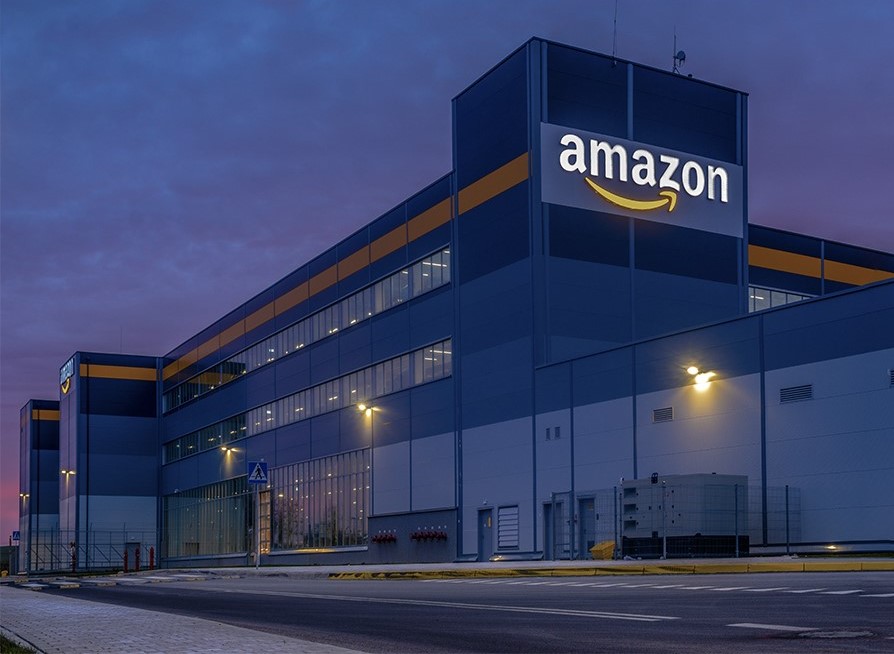Are you a big brand? Here's why you need to be on Amazon (even if you're not selling on Amazon!)
Are you on Amazon?
Not just selling on Amazon. Are you ON Amazon?
Do you have the brand presence on Amazon you need to stand out among your competitors, both on Amazon and across the retail world?

Amazon is no longer just a shopping site. It’s used by potential customers as a benchmark for prices and a source of information on brands, and if you’re not on there, you’re at risk of being overlooked.
There’s also a risk that your products will be sold on Amazon without your permission, or even without your knowledge, particularly if you’re a famous brand.
There’s only one way to control your brand on Amazon – and that’s to be on Amazon.
Taking back control
Let’s use Michelin, the global tyre brand, as a case in point.
Before it established its Amazon presence, Michelin found some, let’s say, interesting listings on the site. Among them was a flagship tyre, sold by a third party seller but under the ‘Michelin’ name, which featured as its main picture a model wearing a t-shirt.
It was completely irrelevant to Michelin’s brand – and without control over its brand on Amazon, Michelin could do nothing about it.
With help from e-Comas, Michelin embarked on a journey to take back control of its Amazon listings.
The first step for any brand doing the same is to enrol in Amazon’s Brand Registry programme, ensuring you’re recognised as the owner of your IP, and can easily flag up dodgy listings. There’s lots more information about Brand Registry in our free white paper.
Brand visibility on Amazon
You may not consider Amazon a strategic partner for sales and distribution. But thanks to its global dominance, you might find it becomes a strategic partner for media presence and brand visibility by default.
Consumers spend time on Amazon finding prices and information on products they’re thinking of buying. Even if they don’t buy it from Amazon, Amazon is still an important part of their purchase process – and so a big opportunity for brand exposure.
If these shoppers search for you on Amazon and find only a shaky presence, dominated by third-party distributors and counterfeits, it’s a bad experience for them which could turn them off your brand.
On the other side of the coin, if you’re selling a premium product, being on Amazon allows you to better showcase it and give convincing reasons why shoppers should pay more for it.
Tips for content on Amazon
Well-known brands can do things a little differently in their listings on Amazon. Here are some hot tips from our e-Comas experts:
1: When it comes to titles, sometimes less is more – especially with well-known brands.
It’s tempting to shoehorn as many keywords in as possible, but you don’t need a three-line title: less than 70 characters can be really effective. The brand, the product and the type/size is what the customer is looking for, especially if the customer is likely to have searched for the product by brand.
The benefit of this, as well as it looking tidy and better reflecting the brand, is that the whole title will be viewable on mobile.
2: A+ content, or enhanced content, is free when you’re enrolled in Brand Registry and allows you to build attractive, branded content in your listing – more about it here.
The A+ table module is really effective for engaging shoppers and for cross-selling your other products. You can compare them in a table, showing your different ranges, so that if the listing the customer is currently looking at isn’t right for them, you’re giving them more options.
3: Finally, make sure you build a Brand Store! This is your shop window on Amazon, and can lead to a 35% uplift in attributed sales per visitor, according to Amazon.
The Brand Store allows you to show off all your products together. You can group them however you want: by range, by season, or by product type.
You can also use the Brand Store in different ways depending on what you want to get out of Amazon. For example, some brands use it to advertise current promotions. Others use it in a more brand-focused way, concentrating on communication with customers and how the brand is presented, rather than direct sales.
We think that’s a really strong point from which to build up traffic and sales.
Why aren’t you on Amazon?
Why aren’t you on Amazon?
Perhaps it’s because your industry is one of those – like the automotive sector – which have never really taken off on Amazon.
But Amazon conquers all in the end, and traffic (no pun intended) for automotive has steadily been growing across Europe; it has opened specialist Automotive stores across its marketplaces.
If it hasn’t so far made sense for you to include Amazon in your business plan, chances are it will soon.
e-Comas CEO Jérôme de Guigné says: “If you’re really not interested in selling on Amazon, you still need to be there to control your content.
“And I’ve never seen content really well handled if the brand is not involved themselves, because there are so many issues to solve that you really need to have the energy and the passion of a brand, that the reseller probably will not have in the same way, to handle it.”